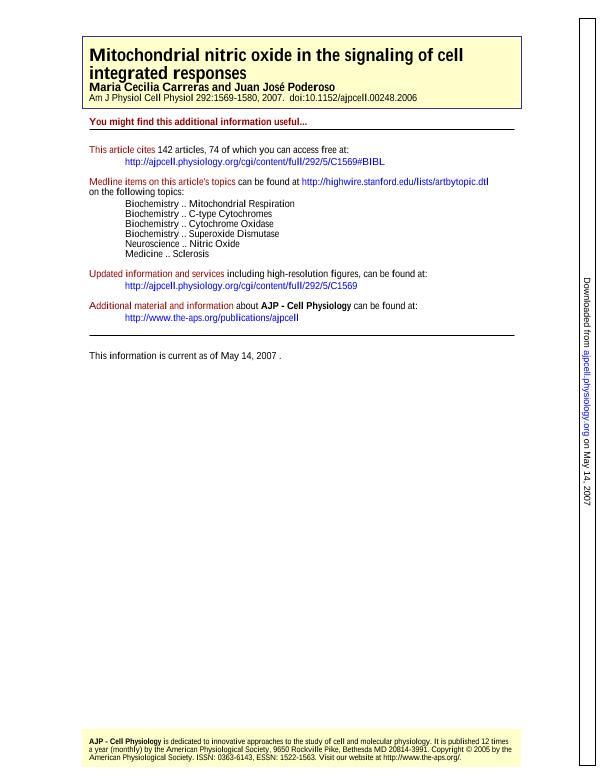Artículo
Mitochondrial nitric oxide in the signaling of cell integrated responses
Fecha de publicación:
01/05/2007
Editorial:
American Physiological Society
Revista:
American Journal of Physiology-cell Physiology
ISSN:
0363-6143
Idioma:
Inglés
Tipo de recurso:
Artículo publicado
Clasificación temática:
Resumen
Mitochondria are the specialized organelles for energy metabolism, but, as a typical example of system biology, they also activate a multiplicity of pathways that modulate cell proliferation and mitochondrial biogenesis or oppositely promote cell arrest and programmed cell death by a limited number of oxidative or nitrosative reactions. These reactions are influenced by matrix nitric oxide (NO) steady-state concentration, either from local production or by gas diffusion to mitochondria from the canonical sources. Likewise, in a range of ∼30-200 nM, NO turns mitochondrial O2 utilization down by binding to cytochrome oxidase and elicits a burst of superoxide anion and hydrogen peroxide that diffuses outside mitochondria. Depending on NO levels and antioxidant defenses, more or less H2O2 accumulates in cytosol and nucleus, and the resulting redox grading contributes to dual activation of proliferating and proapoptotic cascades, like ERK1/2 or p38 MAPK. Moreover, these sequential activating pathways participate in rat liver and brain development and in thyroid modulation of mitochondrial metabolism and contribute to hypothyroid phenotype through complex I nitration. On the contrary, lack of NO disrupts pathways like S-nitrosylation or H 2O2 production and likewise is a gateway to disease in amyotrophic lateral sclerosis with superoxide dismutase 1 mutations or to cancer proliferation.
Archivos asociados
Licencia
Identificadores
Colecciones
Articulos(INIGEM)
Articulos de INSTITUTO DE INMUNOLOGIA, GENETICA Y METABOLISMO
Articulos de INSTITUTO DE INMUNOLOGIA, GENETICA Y METABOLISMO
Citación
Carreras, Maria Cecilia; Poderoso, Juan José; Mitochondrial nitric oxide in the signaling of cell integrated responses; American Physiological Society; American Journal of Physiology-cell Physiology; 292; 5; 1-5-2007; C1569-C1580
Compartir
Altmétricas




